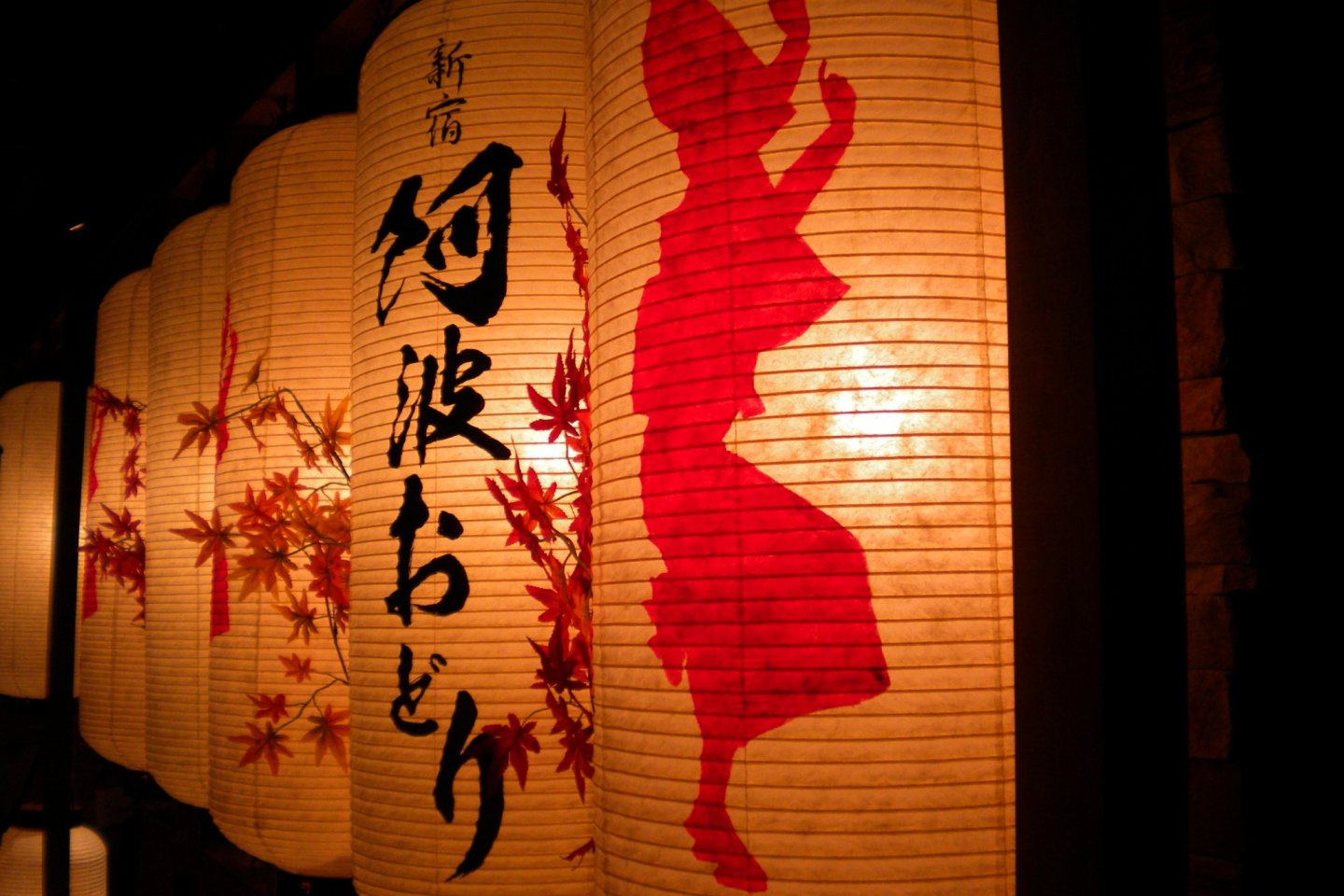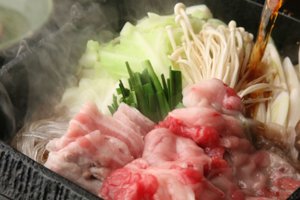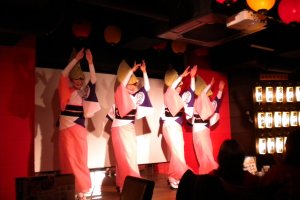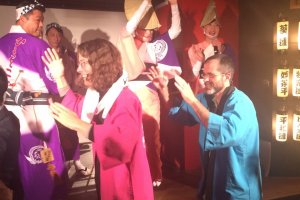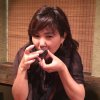A short elevator ride whisks visitors from the glitter and bustle of Shinjuku to Awaodori, one of Japan’s most beloved traditions brought to life in a charming restaurant. The doors open on a room where year round the gold and red lanterns of this summer festival warmly glow, the shochu is perfectly chilled, and the food always delicious.

My husband and our two companions settle in at simple wooden table on the main floor with a few other early guests. Our waitress in a bright yukata (summer kimono) approaches with a smile and recommends the sudachi sour to get us started. Sudachi, along with the awaodori dance itself, is Tokushima Prefecture’s other famous export. This little green citrus, no bigger than a ping pong ball, is present in nearly every dish and beverage on the menu. It’s tart lemon-lime flavor lends a zip and zest that we all quickly fall in love with. The sudachi sour is no exception, of course. “It’s dangerously close to a gin and tonic,” says my husband after his first taste, “but better.”
The room continues to fill as we sip and nibble at the first item on our Awaodori set: a generous plate of salmon and taiko (sea bream) liberally sprinkled with finely cut green onion and marinated in freshly squeezed sudachi juice. Perfect, I think, as I steal an extra slice of each from the platter.

Our crisp Caesar salad arrives quickly followed by grilled to perfection satsuma-age (fish sausage). The balance of savory dishes matches the sweet umeshu (plum wine) that we order for our second round. My husband orders his on the rocks, the golden liqueur smooth as silk, while mine shimmers in sparkling water. Both are as dangerously delicious as the sudachi sour.
“Yato-yato-yato-sa!” calls a waiter as he pours shochu into a large ceramic bowl of ice and thinly sliced sudachi for a nearby table. “Yato-yato-yato-sa!” the five women gathered there respond as another server taps out a beat on a taiko (drum) slung over her shoulder. The call and response, part of the signature song of the festival, continues until the first cup is ladled out and served from the shochu donburi. The festival mood deepens.

Just as the waitress lights the flame under our sukiyaki bowl, the Awaodori dancers appear for the first of their two nightly performances. Each evening a different group from Koenji, home to Tokyo’s largest and most famous awaodori festival, performs. As the beef, mushrooms, carrots, and onion simmer, a flute begins to play at the back of the room. Soon joined by a single drum, the dancers take the stage. Women in their pink yukata and signature straw hats tied tight under their chins, men in their white and blue coats, perfectly white tabi (toe socks) on their feet.
The music, haunting and joyful all at once, fills the room. We clap with the beat as the dancers take the first steps in a pattern more than 400 years old. “Yato-yato-yato-sa!” we call as we smile and rise to join them. All of us in the dining room put on our matsuri (festival) coats and happily follow the dancers around the room moving our feet in those same steps, our hands in those same (hopefully) graceful moves. Chill December winds might be blowing outside, but in here it’s August and the festival has begun.
